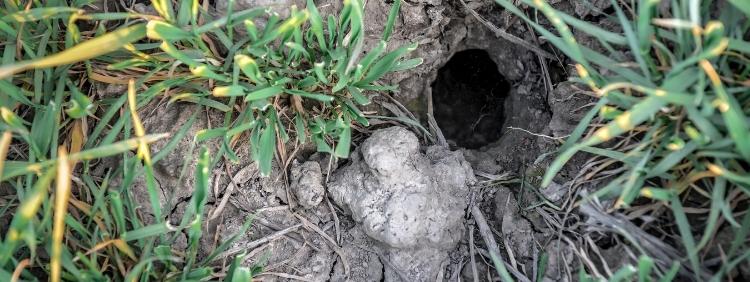Kitchener Pest Control: What Do Rat Holes Look Like?

In the wild, rats live in underground burrows. Rats have adapted to live as close to humans as possible and actively seek out homes in human habitations, especially when the weather turns colder as fall transitions to winter. As a result, rats instinctively dig burrows to gain access to human homes, leaving behind the holes as evidence of their presence. You should call rodent control services in Kitchener to deal with a suspected rat infestation, but how do you know that it is a rat that is digging them rather than another animal? This guide explains everything you need to know about rat holes.
Why Are Rat Holes Dangerous?
The most important reason why rat holes are dangerous is also the most obvious: They allow rats to get into your home. Once inside, they can spread disease, possibly by biting but more often through their excrement. They can also do extensive property damage by chewing on building materials, such as electrical wires, insulation, and plumbing pipes. Damage to these materials can cause water leaks, affect energy efficiency, and increase the risk of a house fire.
As though an infestation of rats was not bad enough, once they have dug a burrow into your home, other animals may then use it as an entry point compounding the original problem. Squirrels, mice, birds, skunks, and raccoons are all examples of animals that might take advantage of an existing rat hole, expanding it if necessary.
What Do Rat Holes Look Like?
A rat hole may not be perfectly round, but it is roughly two to four inches in diameter. You usually see freshly dug dirt around the opening that forms a characteristic fan shape. Depending on the season, the rats may frequently go outside to forage for food, and the frequent use makes the sides of the hole smooth.
In addition to the main entryway, rats often dig bolt holes nearby. These are adjacent to the main burrow and are used as an escape route in case of danger. The bolt holes may not be as large or as obvious; they may be plugged up with dirt or hidden under nearby objects. It may take some careful investigation to find them, but if there are multiple holes in the vicinity, it is an indication that you are dealing with rats rather than another type of burrowing creature.
Where and How Deep Do Rats Dig Holes?
Another sign that you are dealing with rats rather than other burrowing animals is the location of the holes. Rats dig holes close to homes, decks, sheds, and other structures that provide shelter and protection. The holes, therefore, tend to be close to the foundation, no more than three feet away. If there is a hole or imperfection in the foundation that they can exploit, rats can make the opening wide enough for them using their teeth. Even a concrete foundation may be vulnerable to a rat. Softer materials, such as plastic or wood, stand even less of a chance against the rats’ powerful jaws and teeth.
The depth of the hole is also a clue that indicates whether you are dealing with a rat or something else. While rats can dig a hole up to three feet deep, they prefer to dig no deeper than 18 inches. On average, their holes will not be any deeper than that, unless the rat is trying to get past a stubborn obstacle, such as a concrete slab.
Call Truly Nolen for Rodent Control Services in Kitchener
Rats have large numbers of babies and reproduce very quickly. Therefore, if you suspect an infestation, you should act immediately. Find out more about the comprehensive rodent services that Truly Nolen provides in the Kitchener area.